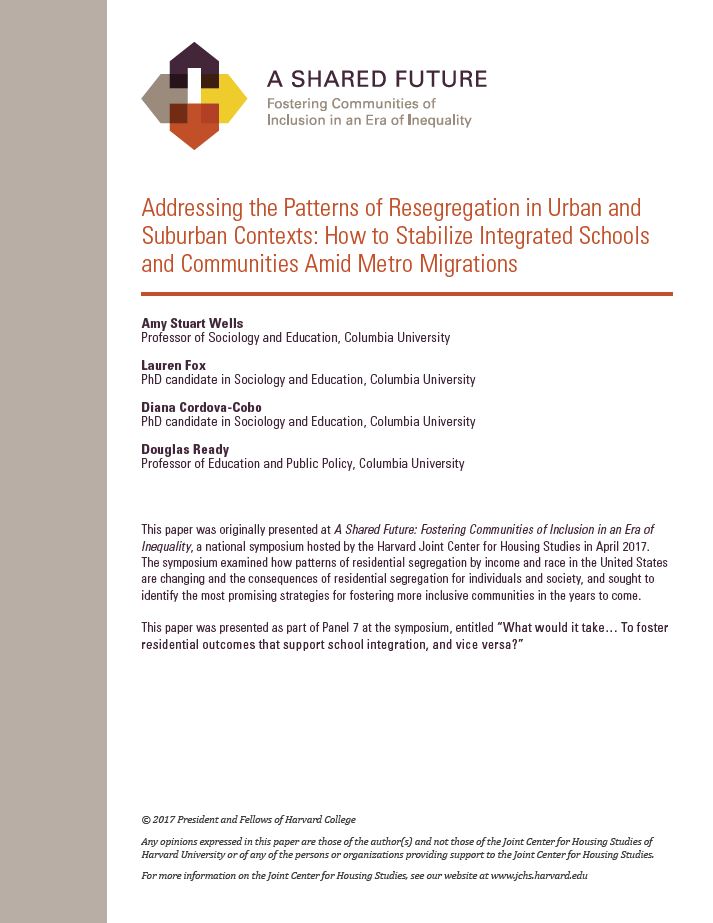A Shared Future: Addressing the Patterns of Resegregation in Urban and Suburban Contexts: How to Stabilize Integrated Schools and Communities Amid Metro Migrations
This paper notes that, while a large body of research has documented the patterns, degree, and effects of racial segregation, what is missing from this literature is a more nuanced understanding of the process by which segregation is reproduced. To fill this gap, they conducted studies in a gentrifying part of New York City and in the increasingly diverse suburbs in Long Island's Nassau County, adjacent to New York City. They find that in both locales, homebuyers and parents base extremely important life decisions on “word of mouth” reputations of schools and communities, even when that information is not consistent with seemingly more reliable quantitative data about those places. Moreover, they add, these decisionmaking processes often create a self-fulfilling prophecy that is leading to racial resegregation in many suburban towns, as well as reduced property values in communities with more Blacks and Hispanics. They conclude by noting that "policymakers and advocates who want to address racial inequality in American housing and schools must appreciate the iterative relationship between intangible and tangible factors in the housing-school nexus." Doing so, they explain, would require concerted efforts that would involve everything from student assignment policies to examining whether current accountability policies in the field of education exacerbate segregation and inequality.

